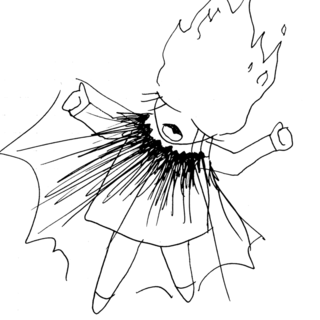Habit Formation
3 Ways to Tame Toddler Tantrums
How to handle meltdowns in the moment.
Posted June 16, 2020 Reviewed by Abigail Fagan
Last night, while my 3-year-old played in the living room and my husband read to the baby, I found myself collapsed on the kitchen floor, head in hands, tears rolling down my face. I did not want to face my child. I did not feel I could handle it.
Here I was, a child psychologist, and yet again the prospect of a simple bedtime routine—with its promise of an accompanying emotional meltdown for both her and me—completely overwhelmed me.

Behavior difficulties like tantrums and outbursts are already one of the hardest parts of being a parent, and they’re becoming increasingly common during the current pandemic.
How can we address them?
1. Use behavior modification strategies.
Behavior modification techniques are great tools to have in your kit. They are the basis for essentially every evidence-based behavior management program that exists, and for good reason: There’s a lot of evidence for their efficacy.
You could try a sticker chart, or a reward menu for good behavior, or removing privileges or time out as consequences for behaviors you want to see decrease. (And don’t worry, time out is safe, even for children with trauma histories.)
When you use rewards and punishments, consistency is important. Take the emotion out of your commands. Rewards work better than punishment.
These are tried-and-true tips and tricks. The problem comes when you try to implement them in real life. It’s really hard to be consistent and deliver consequences like a dispassionate robot all the time. It’s sometimes impossible to take the emotion out of it. You’re going to need more.
2. Prioritize your own self-regulation.
What matters even more than the specific strategies you use is how you monitor, regulate, and react to emotions.
Why is that?
First, you model for your child how to face and recover from distressing situations. Do you show through your words, tone, and actions that it’s not OK to have bad feelings? That you can’t stand to feel sad, angry, or scared? They’re learning from you all the time (I check a lot of these boxes too, don’t worry).
Second, when you spin out of control, your stress response system goes haywire. There's biology at play here—your body thinks, “THERE’S A TIGERRRRRRRRRRR!!!!!!!!!!!!!” and you start breathing harder, shifting from higher-level thinking toward more automatic reactions, valuing emotional input over all else, and getting ready to run.
Your child then interprets your facial expression, breathing and voice patterns, and your jumpiness or postural rigidity as indicative that no one is in control. So they should be scared and ready to fight (or fly) too.
Additionally, when you’re in that state, you’re not as attuned to the child’s verbal and nonverbal cues of distress, to their emotional signals, to their needs. Co-regulation breaks down at this point.
But all is not lost. When you see yourself falling apart, you can always begin again. Just notice. Take a breath. Get back on that horse and re-engage.
3. Recognize and validate the child’s experience.
Now you can tune back in and say, “I hear you. I’m here.” Now your child doesn't feel they have to keep shouting and kicking to communicate the intensity of her emotions to you. Because remember, behavior is communication.
Some books will tell you to give a more elaborate version, like, “You are really angry at your sister because she took your toy.” From clinical and personal experience, I find that (a) hard to put together and get out in the heat of the moment, and (b) overly interpretive (guess what your kid will say? “No I’m not!”). I like to keep it simple.
I also find that any attempt to reflect or validate a child’s feelings in the moment does not work if it’s (a) before I’ve calmed myself down, or (b) inauthentic (what Carl Rogers would call “incongruent”).
Here's the most effective parenting experience I've personally had. My toddler was throwing a beast of a 2-year-old tantrum. I walked her to her room, sat next to her, and said, “I’m here. I know.” I did not instruct, narrate, or otherwise try to intervene, either physically or verbally. I simply sat with her in her pain.
The moment (OK, 20ish moments) passed. It was extremely difficult. My stress response system was on full alert the entire time. She pushed and kicked me and ran at the door, tried to open it, fell down, sobbed, and repeated. I sat and breathed and waited, though. And I told myself, “This will end. It’s temporary.” When she had calmed down, she fell asleep on my chest. It was over.
It doesn’t always work that way. But when I can remember to ride the wave, to not react, and to just be there next to her, it certainly ends sooner and without the increasing escalation and conflict that otherwise ensues. I also don’t feel like a terrible person and parent in the aftermath.
It might sound like I’m letting her get away with something, but at the height of emotional dysregulation, kids have to calm down first. You have to calm down to help them calm down. Only then can any real problem-solving occur.
Behavior modification strategies are great, but it takes a few extra tweaks to get them to work in real life. Tuning into your own emotions, as well as those of your child, can make all the difference. I’ll try to remember that myself the next time I’m cornered at bedtime.




